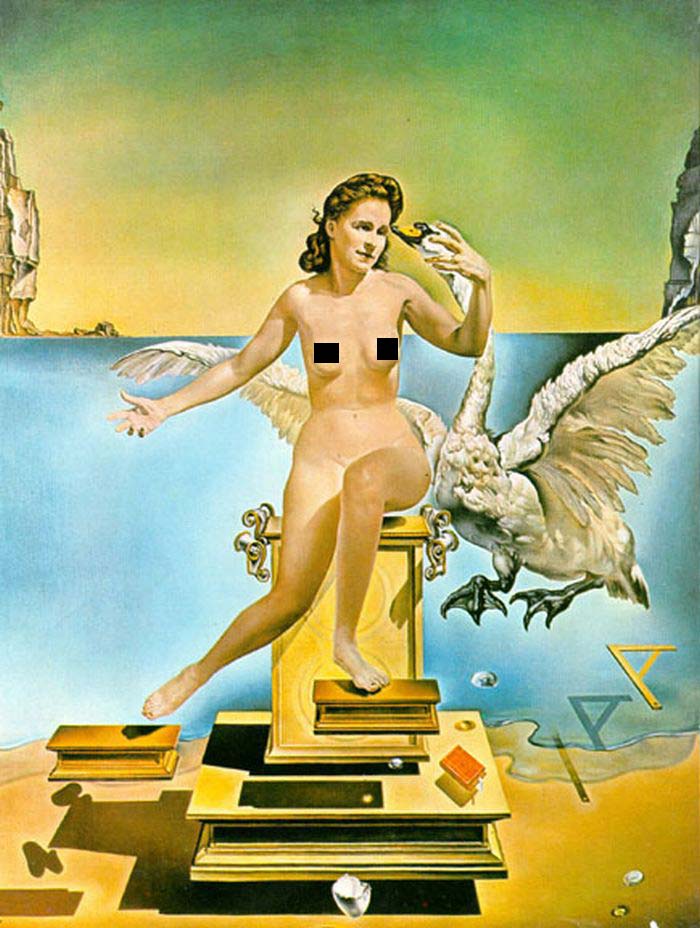| Leda Atomica | |
|---|---|
 |
|
| Artist | Salvador Dalí |
| Year | 1949 |
| Medium | Oil on canvas |
| Location | Dalí Theatre and Museum in Figueres, Catalonia, Spain |
| Dimensions | 24.1 in × 17.8 in |
| 61.1 cm × 45.3 cm | |
Leda Atomica is a classic 1949 painting by Salvador Dali. The painting is of the mythical queen of Sparta and the imageries weaves in the classic surrealist style that Dali was famous for while also combining images from modern science. The painting currently hangs on display in the Dalí Theatre and Museum in Figueres.
The Image in the Painting
At first glance, the imagery in the painting draws from Greek mythology. Leda appears in the painting with a swan. In Greek mythology, Zeus turned into a swan to rape Leda on her wedding night. What many may not be aware of would be the fact the features of Leda are actually that of Dali’s wife, Gala.
In the painting, Leda sits on a pedestal near the swan. Several strange items float around Leda. These items include an egg, two stepping stools, a book, and a set square. These items might not really appear to make much sense in terms of their relationship to Leda. This lack of connection is, of course, a common motif in surrealism.
Surrealism and Imagery
In the art movement of surrealism, many easily recognizable images are presented in a painting in a manner that does not seem to make logical sense. The lack of logic and cohesiveness of the images leads the person looking at the painting to look closer at the painting to try and figure out the themes the artist is trying to create.
In Leda Atomica, the themes in the painting are somewhat unique. The painting attempts to draw in imagery from science and physics and tie them to images from ancient mythology. Everything in the painting seems to float in space and defy the themes of gravity. Since modern scientific visuals are mixed with classical mythology, there are hints that the painting reflects the notion that on a spatial and temporal level, time is a mythical illusion.